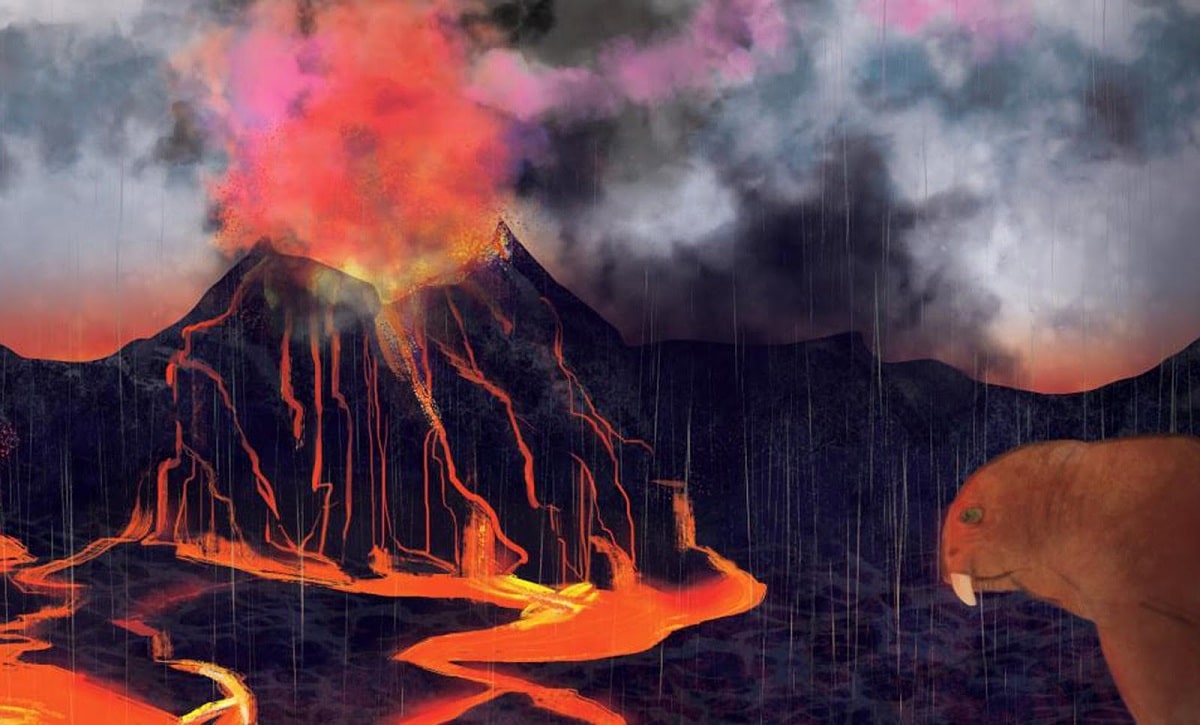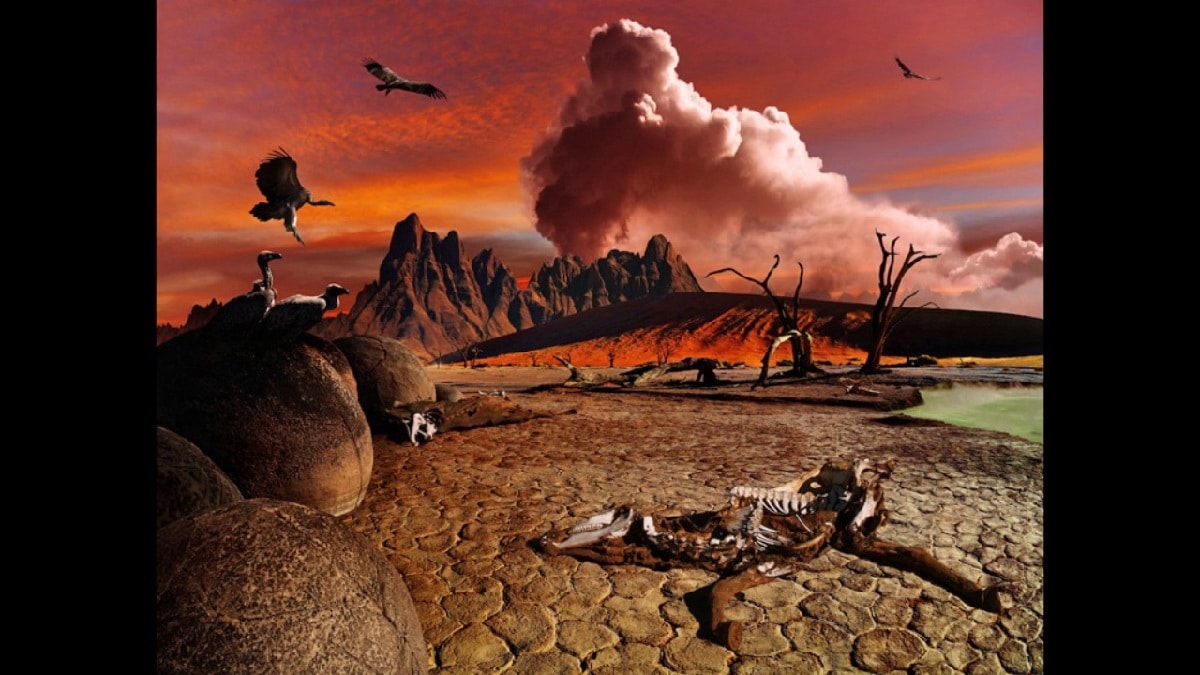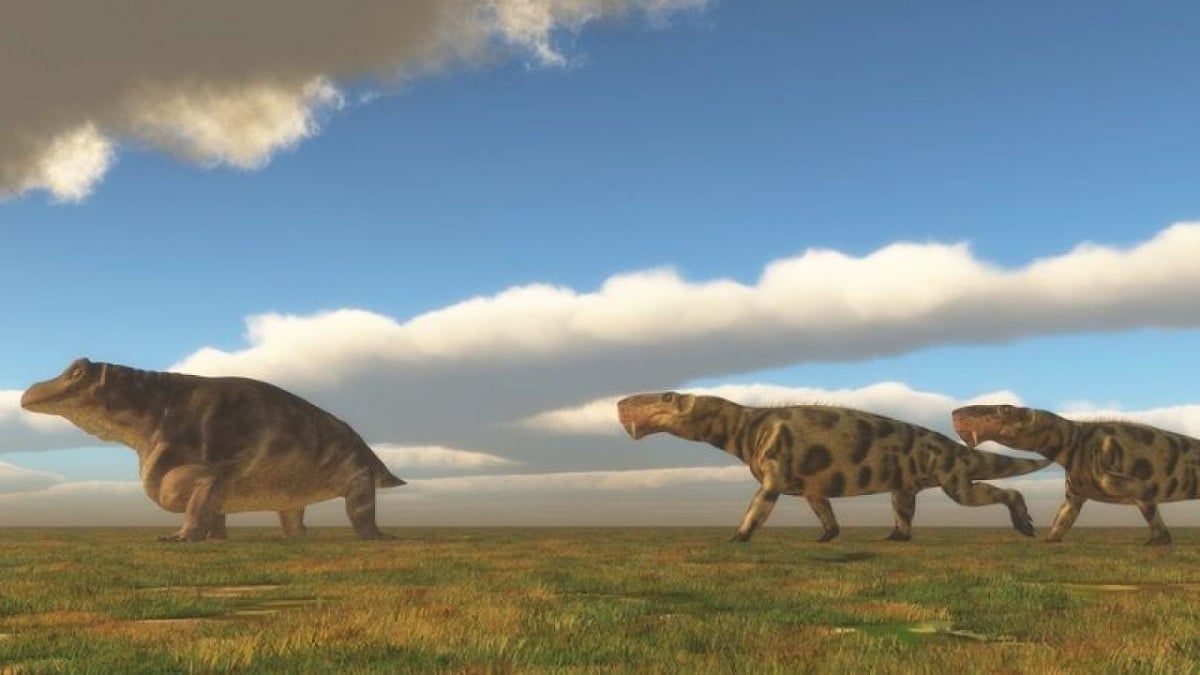
We know that throughout the geological time that has elapsed on our planet there have been numerous extinctions. Today we are going to talk about the Permian extinction. It is one of the 5 catastrophic events that our planet has experienced throughout its history.
Therefore, we are going to dedicate this article to everything you need to know about the Permian extinction and what its consequences were.
Permian extinction

Although most people believe that the extinction of the dinosaurs was the most devastating, it is not. There are numerous studies carried out from data collected by specialists in this area, and they affirm that the mass extinction was at the end of the Permian and the beginning of the Triassic. The reason it is considered one of the most serious is because almost all life forms on the planet have disappeared.
In this extinction, over 90% of all species of living beings on the planet were wiped out. It is important to note that our planet was alive at that time. The fact that there were a large number of animal species and life was developing has been achieved thanks to fossil studies. Because of the Permian extinction, planet earth was practically desolate. The inhospitable conditions that the planet developed meant that only some species could survive.
This extinction served as a starting point for the rebirth of other species that dominated the following years of the planet and were the well-known dinosaurs. That is, thanks to the Permian extinction, we have the existence of dinosaurs.
Causes of the Permian extinction

The extinction that occurred in the late Permian and early Triassic has been the subject of study by many scientists for many years. Most studies have devoted their efforts to finding the cause that originated this type of devastation. In the wake of what happened so long ago hardly any specific evidence has been found to affirm the cause of this catastrophic event. You can only have theories that are more or less established in a deep and conscientious study of the fossils that have been found.
One of the main reasons that the cause of the Permian extinction is believed to have occurred was because of intense volcanic activity. Since volcanoes were intensely active, they emitted large amounts of toxic gases into the atmosphere. These gases caused a drastic change in the composition of the atmosphere that made species unable to survive.
Volcanic activity was particularly intense in one of the areas of the Siberia region. This area is rich in volcanic rock today. During the Permian period, this entire area experienced successive eruptions that lasted for a million years. You just have to imagine a volcano actively for a million years to understand that the atmosphere could change its composition and become toxic.
All volcanic eruptions not only released a quantity of lava, but also gases. Gases among which we find carbon dioxide. All these events were enough to cause a drastic climate change, which increased the global temperatures of the planet.
The land surface was not the only one affected by volcanic eruptions. Water bodies also received a great deal of damage from intense pollution as a result of levels of certain toxic elements emitted from volcanoes. Among these toxic elements we find mercury.
Impact of a meteorite

Another of the theories that are established to explain the Permian extinction is that of the impact of a meteorite. The fall of a meteorite is perhaps the most cited cause for all specialists in this field. There is biological evidence that it had the collision of a large meteorite that hit the earth's surface. Once this large meteorite collided with the Earth's surface, it generated widespread chaos and destruction. After this collision, there was a reduction in the total life of the planet.
On the continent of Antarctica, an immense crater of approximately about 500 square kilometers in diameter. That is, for an asteroid to leave a crater of these dimensions it is possible that it would measure at least 50 kilometers in diameter. In this way, we see that a huge meteorite impact can be the cause of the disappearance of most of the life on the planet.
The same scientists who study the causes of the extinction of the Permian are those who affirm and postulate that the impact of this asteroid liberated a great ball of fire. This great ball of fire produced winds with a speed of approximately 7000 kilometers per hour. In addition, there is a triggering of telluric movements that reached exceed the measurement scales that are currently known. It must be taken into account that the collision of a type of meteorite like the one we are mentioning could have generated an energy release of about 1000 billion megatons. Therefore, the impact of a meteorite on our planet was one of the most accepted causes of the Permian mass extinction.
Methane hydrate release
Another reason why the Permian extinction is believed to have started is due to the release of methane hydrates. We know that large deposits of solidified methane hydrates can be found on the seabed. As the planet's temperature increased, so did the temperature of the seas. Due to volcanic activity or asteroid collision, caused the planet's average global temperatures to rise. As a result of this little increase in water temperature, the methane hydrates thawed. This causes large amounts of methane gas to be released into the atmosphere.
It must be taken into account that methane is a greenhouse gas with great potential to increase temperature, since it has a great capacity to retain heat. There is talk of an increase of approximately 10 degrees on average globally.
I hope that with this information you can learn more about the cause of the Permian extinction and its importance.